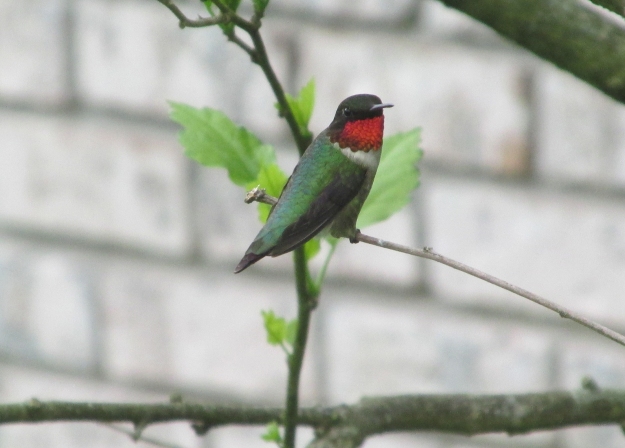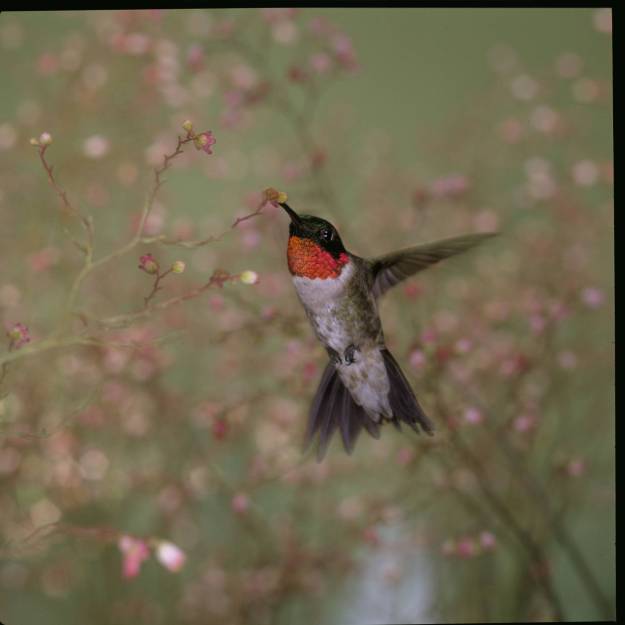
Photo by Bryan Stevens • A trio of Northern Rough-winged Swallows perch on a branch. A total of 39 of these swallows were found on the seventh annual Unicoi County Summer Bird Count.
For the past seven summers, the members of the Elizabethton Bird Club have conducted a Summer Bird Count for Unicoi County.
The seventh annual survey of Unicoi County’s bird life was made more memorable due to the fact it was conducted during a global pandemic with counters practicing social distancing protocols. The Unicoi County Summer Count was held on Saturday, June 6, with 26 observers in 10 parties. The weather was favorable with a temperature range between 62 and 82, mostly to partly cloudy skies, and little wind.

Photo by Bryan Stevens
A Song Sparrow brings a beakful of caterpillars back to the nest to feed young.
Counters tallied 110 species, which is near the six-year average of 109. Total species for this count has ranged from 104 to 112 species. Participants included Joe McGuiness, Vern Maddux, Kim Stroud, Dave Gardner, Don Holt, Dianne Draper, Debi and J.G. Campbell, Bryan Stevens, Brookie and Jean Potter, Eric Middlemas, Ken Rea, Roy Knispel, Jerry Bevins, Michele Sparks, Tammy Griffey, Jim Anderson, Pete Range, Harry Lee Farthing, Tom McNeil, Cathy McNeil, Fred Alsop, Catherine Cummins, Larry McDaniel and long-time count compiler Rick Knight.
The bird found in most abundance was the European Starling with 536 individuals counted. Other common birds included Red-eyed Vireo (226) and Song Sparrow (245). A few birds went undetected, including Great Horned Owl.
This annual count covers territory such as Unaka Mountain, the Lamar Alexander Rocky Fork State Park, Limestone Cove, the Erwin Linear Trail, and much more. Unicoi County offers many natural treasures, not the least of which being the varied and interesting birds that reside within its borders.
The List:
Canada Goose, 54; Wood Duck, 23; Mallard, 42; Ruffed Grouse, 3; Wild Turkey, 5; Great Blue Heron, 5; and Green Heron, 4.
Black Vulture, 6; Turkey Vulture, 45; Sharp-shinned Hawk, 2; Cooper’s Hawk, 1; Broad-winged Hawk, 6; and Red-tailed Hawk, 9.

Photo by Skeeze/Pixabay.com • The Cooper’s hawk, like this individual, is a larger relative of the sharp-shinned hawk. It’s larger size allows this raptor to prey on larger birds, such as mourning doves.
Killdeer, 14; Rock Pigeon, 111; Mourning Dove, 152; Yellow-billed Cuckoo, 6; Eastern Screech-Owl, 3; Barred Owl, 1; Chuck-will’s-widow, 5; and Eastern Whip-poor-will, 9.
Chimney Swift, 45; Ruby-throated Hummingbird, 8; Belted Kingfisher, 2; Red-bellied Woodpecker, 33; Yellow-bellied Sapsucker, 1; Downy Woodpecker, 14; Hairy Woodpecker, 2; Northern Flicker, 13; and Pileated Woodpecker, 26.
American Kestrel,1; Eastern Wood-Pewee, 13; Acadian Flycatcher, 56; Least Flycatcher, 6; Eastern Phoebe, 81; Great Crested Flycatcher, 2; and Eastern Kingbird, 11.
White-eyed Vireo, 2; Yellow-throated Vireo, 1; Blue-headed Vireo, 35; Warbling Vireo, 3; Red-eyed Vireo, 226; Blue Jay, 108; American Crow, 122; and Common Raven, 8.
Northern Rough-winged Swallow, 39; Purple Martin, 30; Tree Swallow, 65; Barn Swallow, 79; and Cliff Swallow, 106.
Carolina Chickadee, 102; Tufted Titmouse; 100; Red-breasted Nuthatch, 3; White-breasted Nuthatch, 17; Brown Creeper, 4; House Wren, 54; Winter Wren, 1; Carolina Wren, 146; Blue-gray Gnatcatcher, 15; and Golden-crowned Kinglet, 12.
Eastern Bluebird, 94; Veery, 15; Hermit Thrush, 3; Wood Thrush, 57; American Robin, 397; Gray Catbird, 27; Brown Thrasher, 24; Northern Mockingbird, 48; European Starling, 536; and Cedar Waxwing, 48.
Ovenbird, 63; Worm-eating Warbler, 40; Louisiana Waterthrush, 14; Black-and-white Warbler, 34; Swainson’s Warbler, 3; Common Yellowthroat, 3; Hooded Warbler, 64; American Redstart, 8; Northern Parula, 39; Magnolia Warbler, 1; Blackburnian Warbler, 3; Yellow Warbler, 9; Chestnut-sided Warbler, 32; Black-throated Blue Warbler, 29; Pine Warbler, 5; Yellow-throated Warbler, 30; Prairie Warbler, 4; Black-throated Green Warbler, 52; Canada Warbler, 6; and Yellow-breasted Chat, 2.
Eastern Towhee, 80; Chipping Sparrow, 68; Field Sparrow, 21; Song Sparrow, 245; Dark-eyed Junco, 33; Scarlet Tanager, 33; Northern Cardinal, 163; Rose-breasted Grosbeak, 6; Blue Grosbeak, 4; and Indigo Bunting, 131.
Red-winged Blackbird, 71; Eastern Meadowlark, 15; Common Grackle, 156; Brown-headed Cowbird, 23; Orchard Oriole, 6; Baltimore Oriole, 2; House Finch, 70; Red Crossbill, 1; American Goldfinch, 110; and House Sparrow, 33.
























